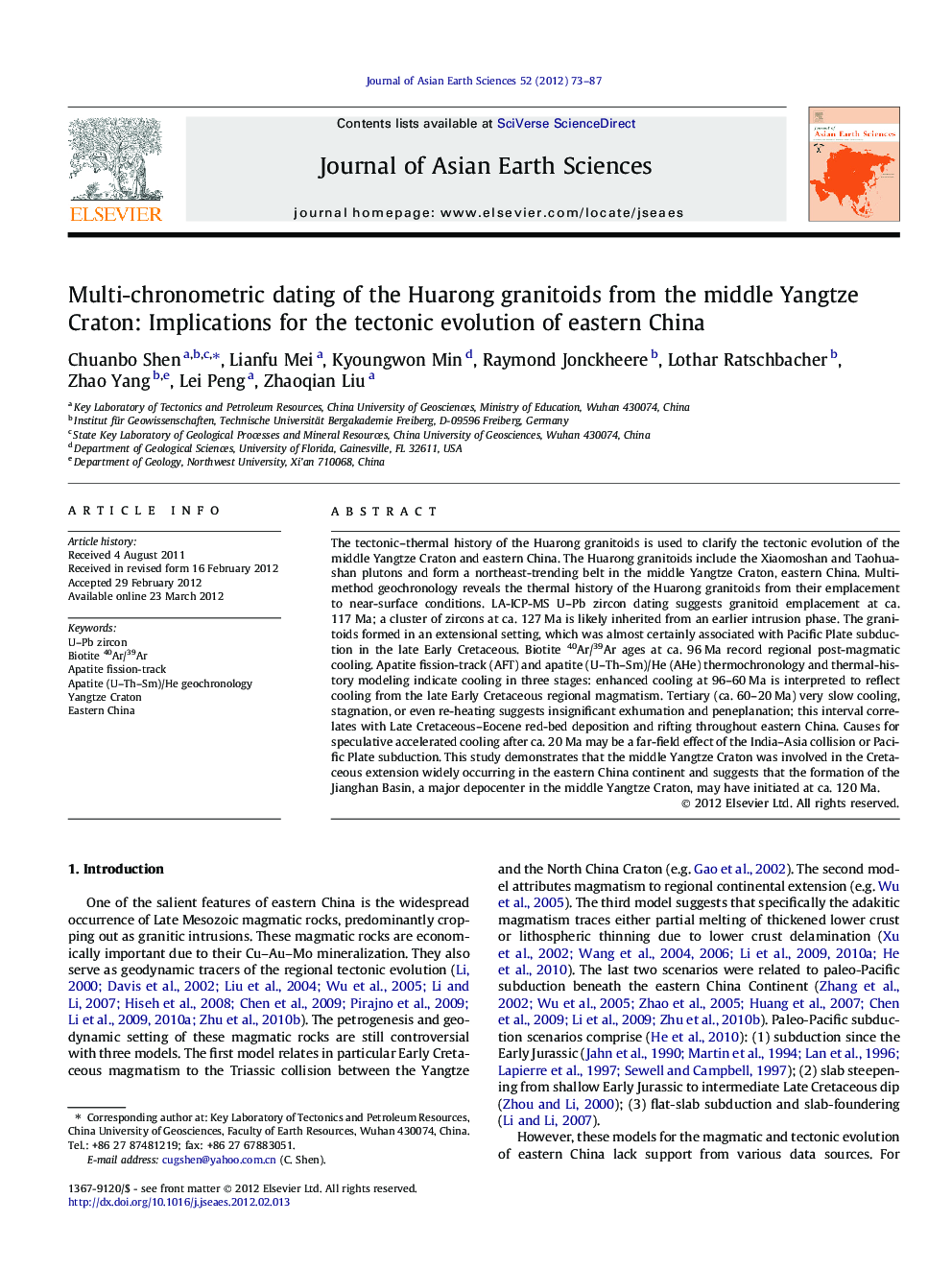| Article ID | Journal | Published Year | Pages | File Type |
|---|---|---|---|---|
| 4731489 | Journal of Asian Earth Sciences | 2012 | 15 Pages |
The tectonic–thermal history of the Huarong granitoids is used to clarify the tectonic evolution of the middle Yangtze Craton and eastern China. The Huarong granitoids include the Xiaomoshan and Taohuashan plutons and form a northeast-trending belt in the middle Yangtze Craton, eastern China. Multi-method geochronology reveals the thermal history of the Huarong granitoids from their emplacement to near-surface conditions. LA-ICP-MS U–Pb zircon dating suggests granitoid emplacement at ca. 117 Ma; a cluster of zircons at ca. 127 Ma is likely inherited from an earlier intrusion phase. The granitoids formed in an extensional setting, which was almost certainly associated with Pacific Plate subduction in the late Early Cretaceous. Biotite 40Ar/39Ar ages at ca. 96 Ma record regional post-magmatic cooling. Apatite fission-track (AFT) and apatite (U–Th–Sm)/He (AHe) thermochronology and thermal-history modeling indicate cooling in three stages: enhanced cooling at 96–60 Ma is interpreted to reflect cooling from the late Early Cretaceous regional magmatism. Tertiary (ca. 60–20 Ma) very slow cooling, stagnation, or even re-heating suggests insignificant exhumation and peneplanation; this interval correlates with Late Cretaceous–Eocene red-bed deposition and rifting throughout eastern China. Causes for speculative accelerated cooling after ca. 20 Ma may be a far-field effect of the India–Asia collision or Pacific Plate subduction. This study demonstrates that the middle Yangtze Craton was involved in the Cretaceous extension widely occurring in the eastern China continent and suggests that the formation of the Jianghan Basin, a major depocenter in the middle Yangtze Craton, may have initiated at ca. 120 Ma.
► Combination of multi-chronometry to reconstruct the tectonothermal evolution history. ► New zircon U–Pb ages indicate granitoid crystallization at ca. 117 Ma. ► New biotite 40Ar/39Ar, AFT and AHe thermochronology record post-magmatic cooling. ► The formation of the Jianghan Basin may have initiated at ca. 120 Ma.
